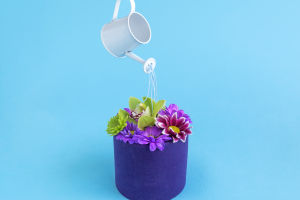Hello, Lykkers! There's a unique kind of thrill that comes with setting up a tent when heading outdoors.
It’s a blend of preparation, adventure, and connection with nature, all wrapped in the simple joy of creating a temporary home under the stars.
While it might seem straightforward, the process of setting up camp can be made much easier—and more enjoyable—with a bit of know-how. Whether you're a first-time camper or a seasoned adventurer, mastering the art of tent setup is an essential skill.
Let's explore why so many people love pitching a tent when traveling and how you can make your experience smoother, more comfortable, and memorable!
The Allure of Camping: A Chance to Unplug
There's something special about getting away from the distractions of everyday life—no emails, no meetings, just the sound of nature around you. Setting up a tent signals the start of this disconnection, where everything becomes simpler, more immediate, and more meaningful.
For many travelers, pitching a tent isn't just about building a shelter; it's about embracing a slower, more intentional way of living. Imagine the freedom of cooking over a campfire, falling asleep under the night sky, and waking up to the sounds of birds chirping. The outdoor experience can be both rejuvenating and energizing.
CAMPSITE SETUP | TENT CAMPING TIPS
The Outdoor Realm
Choosing the Right Spot for Your Tent
Before diving into the technicalities of tent setup, choosing the right spot is crucial. Picking the perfect campsite can make all the difference in your experience. Here are a few practical tips:
Look for a Flat Surface: A flat, level spot makes sleeping much more comfortable. Avoid pitching a tent on a slope, as gravity will work against you, especially if there's rain.
Check for Water Drainage: It's important to stay clear of low-lying areas where water could accumulate during a storm. It's no fun waking up in the middle of the night with puddles inside your tent.
Consider the Wind: If you're camping in a windy area, set up your tent with its door facing away from the wind. Position the tent near natural windbreaks like trees or rock formations to help shield it.
Be Aware of Wildlife: Camping in certain areas may bring you closer to wildlife. Avoid setting up near animal trails or food sources like berry bushes, which could attract animals.
Essential Gear for a Successful Setup
Once the perfect spot is chosen, it's time to dive into the actual setup. Having the right equipment is half the battle. Here's a checklist of items you’ll need to ensure a smooth tent setup:
Tent: Choose one that suits the environment. For example, a three-season tent is ideal for most climates, while a four-season tent is better for harsher conditions like snow or heavy winds.
Tent Stakes & Mallet: Never underestimate the importance of sturdy stakes. Make sure you have enough stakes, particularly for securing the guy lines, which help the tent withstand wind.
Ground Tarp: Placing a tarp under the tent adds an extra layer of protection from moisture and sharp objects on the ground. It also helps prolong the life of your tent.
Sleeping Bag & Pad: A good sleeping bag designed for the weather conditions and a comfortable sleeping pad to insulate you from the cold ground can make a huge difference in your comfort level.
Headlamp or Flashlight: Set up during daylight if possible, but in case you're caught in the dark, a reliable light source is a must-have.
Step-by-Step Tent Setup
Now that the gear is ready, it’s time to put everything together. Follow these simple steps to make the process easier:
Lay Out Your Tent: Unfold your tent and lay it out flat on the ground. Attach the poles to their respective sleeves or clips (depending on your tent type). This step can usually be done by one person, but two people can make it easier.
Insert the Poles: Depending on your tent model, insert the poles into the designated sleeves or clips. Make sure each pole is connected properly before securing it into place. Some tents have color-coded poles and clips to make this even easier.
Stake Down the Corners: Once the tent is standing, stake down the corners of the tent. Ensure the stakes are driven in at a 45-degree angle to the ground, which gives them maximum holding power.
Secure Guy Lines: Attach the guy lines and stake them out if necessary. These lines keep your tent steady in the wind.
Add the Rainfly: If your tent has a rainfly, drape it over the top of the tent and secure it to the ground. This extra layer of protection will keep you dry in case of rain.
Making Your Tent a Cozy Home
After the tent is set up, the next step is making it cozy and functional. Place your sleeping gear and personal items inside. Here are a few tips for adding comfort to your campsite:
Organization is Key: Use stuff sacks or small bags to organize gear inside the tent. Keep essentials like your phone, flashlight, or first aid kit within easy reach.
Comfortable Bedding: Add a camp pillow and sleeping pad for extra comfort. A good sleeping bag is key to staying warm, but remember, layering up with clothes can also help regulate body temperature.
Create a Camp Vibe: Small touches, like a battery-powered lantern, a camp chair, or a cozy blanket, can transform your tent into a space that feels just like home.
The Joy of the Great Outdoors
Setting up a tent isn't just about making a temporary shelter; it's about embracing a slower pace and reconnecting with nature. With a little planning and preparation, this simple act can lead to a deep sense of satisfaction and adventure.
Whether you're enjoying a solo retreat or camping with friends, the moments shared under the canvas sky are priceless. So, Lykkers, next time you're preparing for a trip into the wild, remember: it's not just about the tent—it's about the experience that surrounds it.Happy camping, and here's to countless more nights under the stars!


